| 1 | Red spitting cobra |
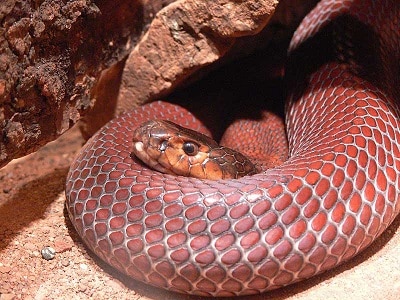
All cobras are unpredictable (except maybe the banded water cobra) and spitting cobras more so, when you add flying globules of venom into the equation. The red spitting cobra (Naja pallida) lives in Ethiopia and Kenya and measures up to 190cm. Red is their main colour, with a signature black stripe across the chest.
Naja pallida can spit accurately at ranges of 2.5 metres, with 2.64mg per globule, but it’s very hard to tell what they’ll actually do. If you park in the savannah and bump into one, it might flee over the horizon, yet it might launch an all out assault.
A jet of venom may randomly fire from a bush, or you may walk past and never realise that Naja pallida was there. A red spitting cobra’s brain is like an infinite roulette wheel. There’s a thousand thoughts spinning around its head at once, some aggressive and some timid, and it’s pure chance as to which will stick. The safest thing to do is not even approach this snake.
| 2 | Diadem snake |
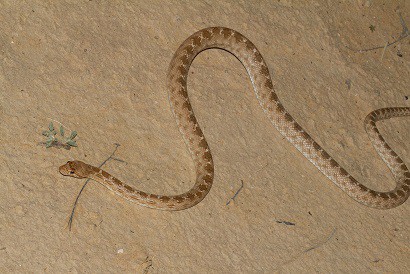
The diadem snake inhabits arid regions of the Middle East and Afghanistan, particularly rocky deserts where it lurks in vacant burrows. It measures 150cm, and largely preys on lizards which it grabs from the desert floor. Diadem snakes love shelter, and spend many long weeks in their dry desert holes. Should you disturb them, there’s no telling what will happen. The diadem snake may look at you with mild curiosity, or it may hiss angrily before delivering rapid stabbing strikes to your leg.
The diadem name comes from their head, which sparkles with iridescent colours like a crown when exposed to light. Fortunately, this is a non-venomous snake, but it’s never wise to have gaping fang wounds while lost in potential temperatures of 45C. Always be aware of the diadem snake when trekking across the Saudi Arabian deserts.
This is a fairly quick species, yet not fast enough to outrun a human being, so if you get unlucky and their dial lands on attack, your best bet is to sprint away as fast as possible. The problems occur when you start reaching into dark desert holes in search of lost artefacts.
| 3 | Tiger snake (Australia) |
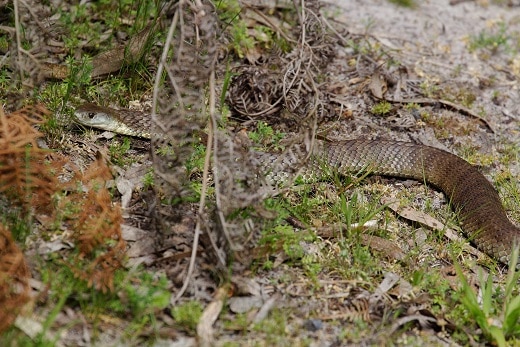
The tiger snake is one of Australia’s most venomous snakes, with an LD50 rating of 0.12mg and a boatload of paralysing neurotoxins. Every Australian has a different story. Some consider them to be calm and cautious, while bushland veterans will talk of raging serpents determined to kill. Nobody is wrong – the discrepancy comes from the tiger snake’s unpredictable personality. It’s impossible to tell how a tiger snake will react, as they don’t conform to normal snake rules. The only certainty is that touching them will deliver a savage response.
Tiger snakes appear in woodlands and fields alike, leaning towards those with plenty of moisture. They reach lengths of 2 metres and were responsible for 17% of Australian snakebites in a survey from 2005-2015.
Tiger snakes are energetic and move dozens of metres per day. Ordinary Australians have a high chance of bumping into them, particularly in their southern stronghold of Melbourne. What happens next depends on your level of snake skills, but also pure luck. Chance may be the only thing determining whether a tiger snake bites or lets you pass – it’s hard to predict.
| 4 | Speckled racer |
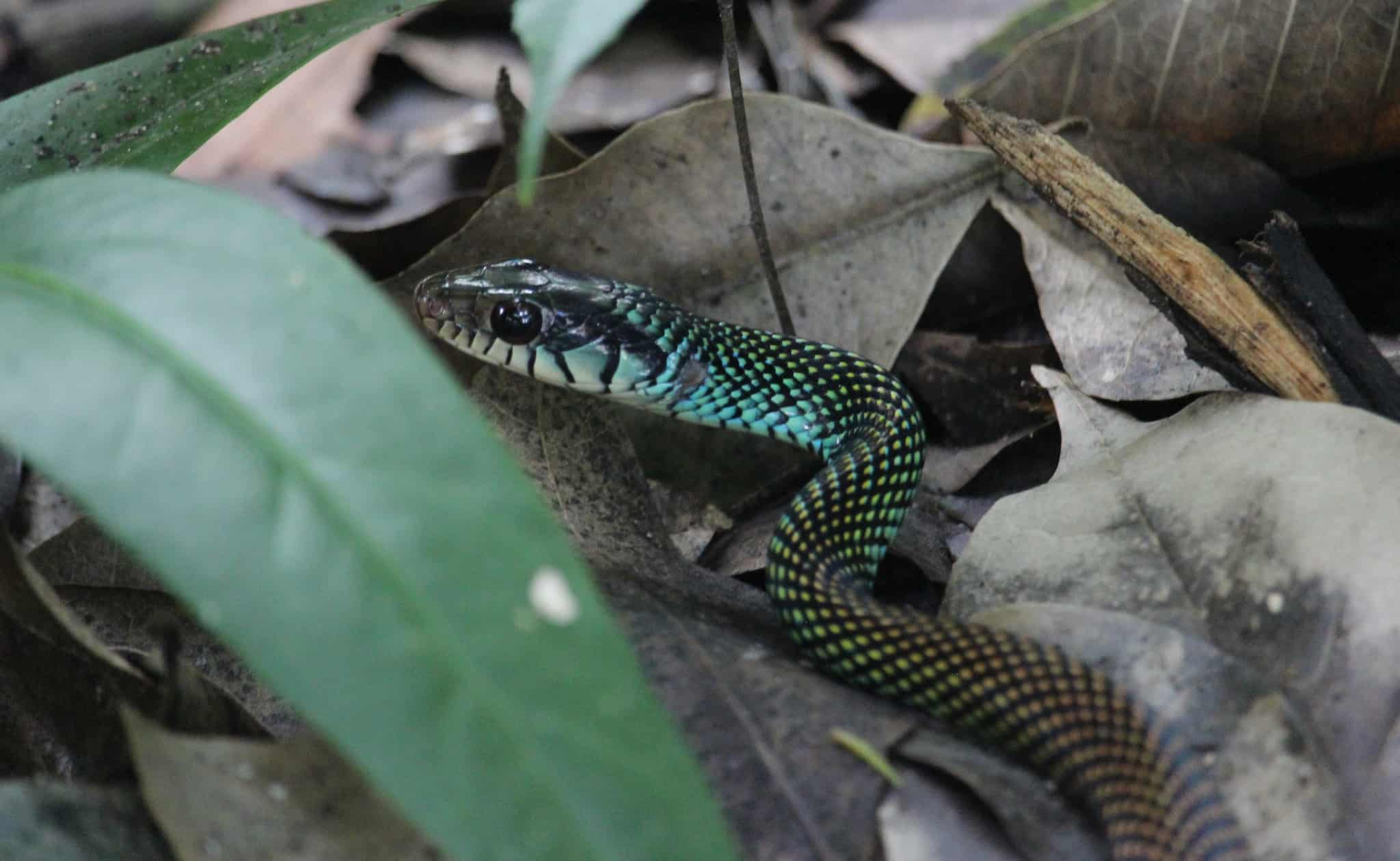
One of Central America’s ubiquitous species. Nobody knows what the speckled racer is thinking and nobody knows what they’ll do next. North, south, up a tree – this snake has a plan, but it isn’t sharing it with anyone.
Speckled racers measure 70-100cm and range from southern Mexico to Panama. They’re non-venomous and derive 86% of their prey from frogs and toads, including Mahogany tree frogs. Speckled racers occupy forest and field alike and slither confidently through villages. Though they’ve never killed a human on record, this snake is a wildcard and it’s best to stand well back. Speckled racers have the power to play dead by going completely still, which they use approximately one quarter of the time. But they also attack, with wild slashing teeth and an utterly demented expression.
As you read this, there’s probably a speckled racer blocking a road in Honduras, with drivers discussing in hushed tones what to do next. Speckled racers erupt into violence with seemingly no logic, although they probably have secret reasons that make sense to them.
| 5 | Green tree snake |
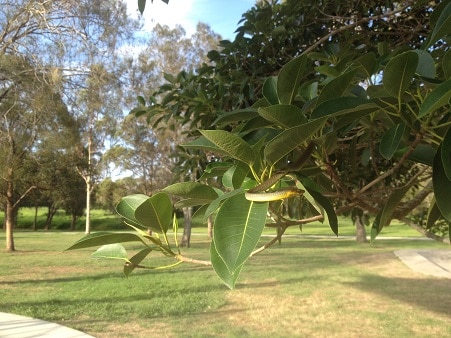
This Australian species is non-venomous, yet is a mischief maker with various tricks up its sleeves, which it deploys totally at random. Green tree snakes are notable for congregating in the same tree, which they return to year after year. They reach 1.5 metres and are abundant along Australia’s entire east coast, feeding mainly on frogs. Meeting a green tree snake is easy in parks and woods, and there’s several possible results:
- You admire the snake, it admires you back, and you walk on peacefully.
- The green tree snake flees to a high branch and you spot its tail disappearing.
- The green tree snake bites wildly, snapping off its teeth and leaving them embedded in your shoulder.
- The snake defends its rightful territory and performs aggressive mock lunges, and you beat a hasty retreat.
Dendrelaphis punctulatus has many skills at its disposal and nobody can predict which they’ll use next. You can’t judge their mood by their facial expression, as they always seem to be smiling. Sadly, reading a snake’s mind is not currently within the capabilities of science. Green tree snakes are generally peaceful, but with a few human-snake misunderstandings, things can go badly wrong. Meanwhile, the carpet python is a peaceful creature which can live by a public bus stop for weeks without anyone noticing.
| 6 | Red-banded snake |
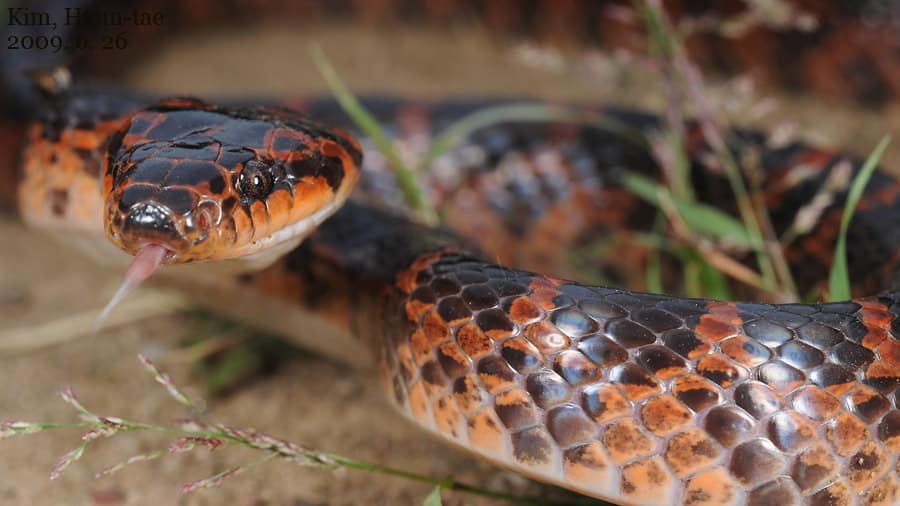
This South Korean snake was dismissed as timid for decades. Early explorers filed it as “innocuous”, and it’s a humble river dweller which never seemed to do much. But the red-banded snake has turned out to have a spiky side to its personality which flashes at random moments.
Red-banded snakes also inhabit southern China and the Japanese Ryukyu islands, and reach 100cm in length. They also live in moist forests, and while one minute they’ll ignore an encroaching human, the next they’ll savagely bite his hand. Lycodon rufozonatus is non-venomous, but has sharp teeth which can rip and tear through skin. Their diet is also more unhinged than once believed. It was originally filed as a simple “reptiles and amphibians” but Lycodon rufozonatus was recently spotted swallowing a black-banded sea krait that had washed ashore. They also swallow sea turtles whole.
One day a red-banded snake will bite, the next day it will huddle up fearfully in its coils. It may boil down to individual personality, just like a human or dog. One red-banded snake on the same riverbank may be more willing to get its hands dirty than another.
| 7 | Saw-scaled viper |
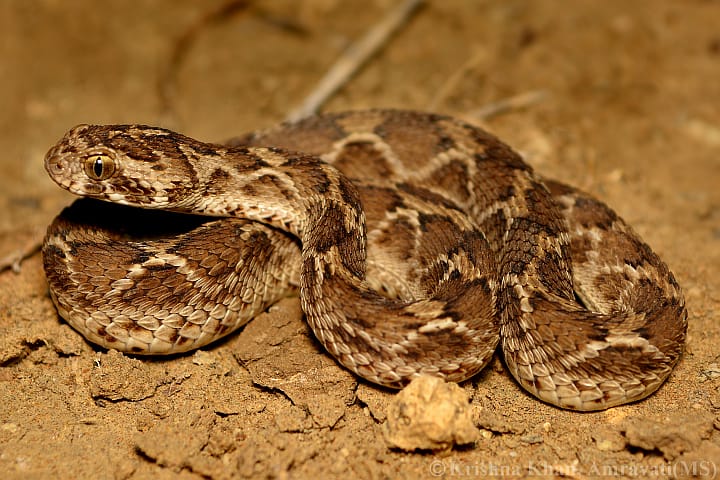
The saw-scaled viper measures 30cm and is part of India’s “big 4” of venomous snakes. With Russell’s viper lurking in crop fields, the saw-scaled viper sticks to drier areas, including semi-desert and rocky plains. They lurk near dry grass tufts or in mammal burrows, vanishing the moment the heavens open with heavy rainfall.
Part of the saw-scaled viper’s danger recipe is that it’s nocturnal, causing locals in remote villages to bump into them while barely visible. Saw-scaled vipers also have an especially unpredictable personality. They flee into the dry undergrowth 50% of the time, but burst forward in determined attack just as commonly. Saw-scaled vipers move extremely quickly when pushed, despite being sluggish ordinarily (unlike a cobra).
Never approach a saw-scaled viper thinking you’ve sussed them out – they live on a whole other planet to human beings and operate in ways we couldn’t possibly understand. It’s possible that they have specific systems – fight in humid weather, flee if the encroacher is moving above a certain speed, etc. It’s equally possible that they truly are mad and unpredictable.
Saw-scaled viper venom specialises in cytotoxins which destroy skin and muscle tissue. Swelling is the first symptom, appearing within minutes. Saw-scaled vipers kill thousands of Indians per year, although military-level operations are now underway to ensure that even the most remote village hospital has antivenom stocked.
| 8 | Lojan’s lancehead |
An obscure pitviper native to the mountains of southern Ecuador, crossing into northern Peru. Lojan’s lancehead lives at altitudes of 2000-2700 metres. As long as there’s vegetation to lurk in, Lojan’s lancehead will be happy. They can inhabit woods, bushland and premontane forests alike, and are strongly venomous, but with little data on the exact toxins.
What is known is that Lojan’s lancehead is highly temperamental. They might spring at your leg with a rapid lunge, injecting 50-100mg of mysterious venom. But they might equally shake their tail vigorously in leaves to alert you to their presence, showing a modicum of mercy.
If you see a Lojan’s lancehead next to your trail, it’s hard to know what to do. You could walk on boldly and be allowed access, with the Lojan’s lancehead barely moving. But there’s a chance you’ll be pounced on, and this fuels the indecision, with the lancehead constantly in view, waiting for your fateful choice. Lojan’s lancehead is one of the 3 obscure Bothrops pitvipers in Ecuador, the others being Osborne’s lancehead and spotted lancehead further north. These are blocked from colonising the rest of South America by the Andes mountain range. Ecuador has a particularly high amount of unique snakes for that reason.
| 9 | Machete savane |
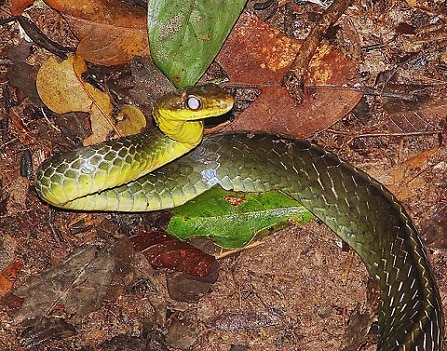
A South American snake which is impossible to predict. This snake is agile and energetic. They love to slither up branches and dangle by their tail, but they also get spooked and flee across rivers at high speeds. Getting spooked may also result in them attacking you with their fangs bared.
Throw in a length of nearly 3 metres and you have a snake it’s wise to be cautious around. Machete savanes are quietly one of the Amazon rainforest’s longest snakes. Rather than slotting neatly into a niche in the ecosystem and playing by the rules, the machete savane is an unhinged, part-time lunatic. One encounter may leave you with a cool story, the other with a painfully bleeding arm. Machete savanes stretch from Venezuala to eastern Brazil, and are usually a mixture of green and yellow. Others members of their Chironius family include the South American sipo and Ecuador sipo.
Another snake in the Amazon neighbourhood is the emerald tree boa, which is very predictable. They stay still most of the day, and only respond ferociously when touched.
| 10 | Gold-ringed catsnake |
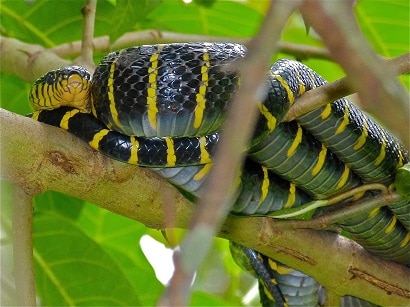
A slightly venomous species of Malaysia and Indonesia which averages at 1.8-2.1 metres. This vivid yellow-black snake is usually photographed in trees, as that’s where they spend 75% of their life.
Draped over a branch, they look relaxed and peaceful, as though there’s nowhere they’d rather be than this Malaysian forest. Yet this is dependent on them being alone. If the gold-ringed catsnake becomes aware of a human being, then anything could happen. They could let you pass, judging that restraint will keep it furthest from harm. They could launch into attack, springing from its branch with its fangs bared wildly. There isn’t a single known way to predict how a gold-ringed catsnake will react to human presence. For other snakes, there’s a couple: a 2001 study found that tiger keelbacks are more likely to stay still and blast toxins from their neck in cold weather, and flee into the undergrowth during warmth.
The mind of a gold-ringed catsnake is a mystery. This species hunts birds and lizards, often by dangling from branches over rivers with its tail fastened. No deaths are confirmed, but painful swelling from its mild venom is possible. A few Boiga catsnakes have turned out to have stronger venoms than once believed.
